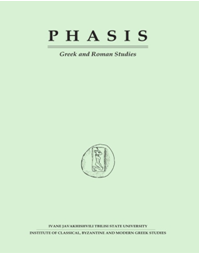Ritual Contexts of the Banqueters with Stringed Instruments in the Western Greek Poleis
DOI:
https://doi.org/10.48614/phasis.19.2016.4-29Abstract
Greek terracottas of male and female players is a valuable subject of investigation for understanding the function of music in the contexts of both production and performance. The figurines are transmitting musical meanings that the ancient observer knew how to decode. Moreover, the representations of musical instruments in coroplastics help us to reconstruct their role in the specific context of worship, and their function in different ritual performances. Among these relevant representations of musical iconography, one of the most popular subjects is the reclining male figure who supports himself on his left elbow, while holding a stringed instrument. This is the typical banqueter motif that is found in funerary and sacred contexts in southern Italy and Sicily from the Archaic period to the beginning of the Hellenistic Age. In this paper, it will be argued that the instruments depicted on the terracotta figurines found in the sanctuaries allow us to understand the status and the age of the musicians, as well as their role in ceremonies.Downloads
Published
2016-01-01
Issue
Section
Articles
License
Copyright (c) 2016 PHASIS

This work is licensed under a Creative Commons Attribution-NonCommercial 4.0 International License.


